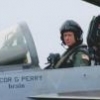How do you check Weather / NOTAMs / TFRs?
How do you check Weather / NOTAMs / TFRs?
55 members have voted
-
1. To get a pre flight weather briefing, I...
-
Go online to my favorite aviation weather provider
-
Call FSS and talk with a briefer
-
Sometimes I do both, go online and talk with an FSS briefer for the same flight
-
-
2. To get my pre flight NOTAM's, I...
-
get NOTAMs through DINS, the FAA's NOTAM website or Lockheed Martin's 1800wxbrief website
-
Call FSS and talk with a briefer
-
Don't usually check NOTAMs
-
-
3. I check TFR's with….
-
An aviation App like Garmin or ForeFlight to show TFRs
-
I use the FAA's TFR map website (http://tfr.faa.gov/tfr_map_ims/html/index.html)
-
Lockheed Martin's Flight Services website as part of my briefing
-
Call FSS and talk with a briefer
-
-
Members Online
- Chaseford10
- terbang
- Will.iam
- DCarlton
- Hank
- TCC
- MB65E
- MikeOH
- Ibra
- firelog1101
- AndreiC
- M20S Driver
- FlyngDude
- johnnyr172
- trevttu76
- RangerM20
- IvanP
- DXB
- Kelpro999
- 00-Negative
- WilliamR
- Lois
- Rusty Pilot
- N201MKTurbo
- M20F
- hbpil
- Shiroyuki
- pilot_jb
- Tmack201
- PaulM
- good2eat
- Guillaume
- NickG
- EricJ
- Jblanton
- AMG880
- dzeleski
- Blaze
- William A
- kortopates
- Denis Mexted


Recommended Posts
Join the conversation
You can post now and register later. If you have an account, sign in now to post with your account.